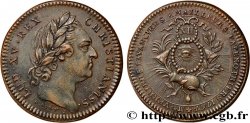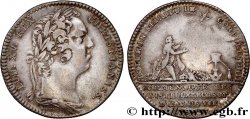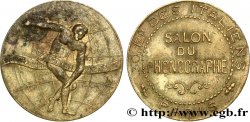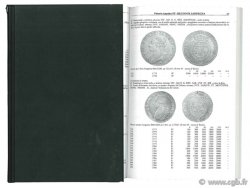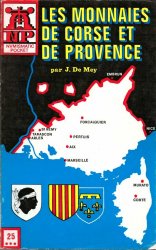fjt_700391 - CORPORATIONS CORPORATIONS : Deuxième corps des marchands - Les épiciers apothicaires 1710
120.00 €(Approx. 139.20$ | 104.40£)
Quantity
Add to your cart

Type : CORPORATIONS : Deuxième corps des marchands - Les épiciers apothicaires
Date: 1710
Metal : silver
Diameter : 30 mm
Orientation dies : 6 h.
Weight : 7,94 g.
Edge : cannelée
Catalogue references :
Obverse
Obverse legend : IN. HIS. TRIBUS. VERSANTUR ; À L'EXERGUE : MARCS. DS. APOTHICAIRES. EPICIERS. 1710.
Obverse description : Écu représentant un serpent qui s'enroule autour d'un palmier.
Obverse translation : Ils sont versés dans les trois règnes.
Reverse
Reverse legend : LANCES. ET. PONDERA. SERVANT ; À L'EXERGUE : MARCDS. EPICIERS. ET. APOTIQUAIRES(SIC). 1710.
Reverse description : Écu représentant une main tenant une balance au-dessus de deux navires voguant vers la gauche.
Reverse translation : Ils ont la garde des poids et des balances.
Commentary
Le palmier est le symbole des trois règnes de la nature, signifiant par son dessin et sa légende que les apothicaires connaissaient les produits qu'ils pouvaient tirer des trois règnes de la nature, seules matières premières à cette époque pour la préparation des médicaments. La légende de revers rappelle une des charges des épiciers-apothicaires, celle de l'inspection et de la vérification des balances et des poids. Voir G. Dillemann, Jetons et Médailles "Pharmaceutiques", Paris 1992, p.14.
The palm tree is the symbol of the three kingdoms of nature, signifying by its design and its legend that the apothecaries knew the products that they could extract from the three kingdoms of nature, the only raw materials at that time for the preparation of medicines. The legend on the reverse recalls one of the responsibilities of the grocers-apothecaries, that of inspecting and verifying scales and weights. See G. Dillemann, Jetons et Médailles \\\"Pharmaceutiques\\\", Paris 1992, p.14
The palm tree is the symbol of the three kingdoms of nature, signifying by its design and its legend that the apothecaries knew the products that they could extract from the three kingdoms of nature, the only raw materials at that time for the preparation of medicines. The legend on the reverse recalls one of the responsibilities of the grocers-apothecaries, that of inspecting and verifying scales and weights. See G. Dillemann, Jetons et Médailles \\\"Pharmaceutiques\\\", Paris 1992, p.14







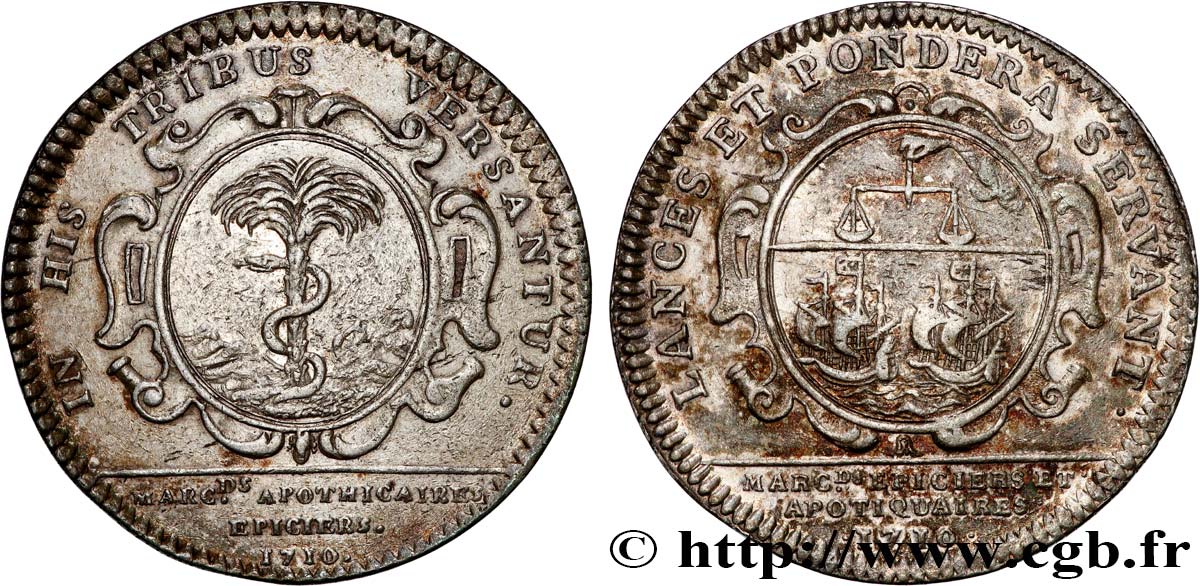
 Report a mistake
Report a mistake Print the page
Print the page Share my selection
Share my selection Ask a question
Ask a question Consign / sell
Consign / sell
 Full data
Full data
